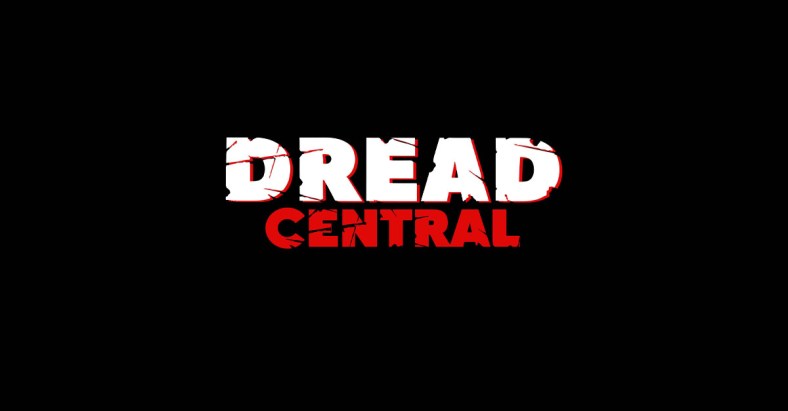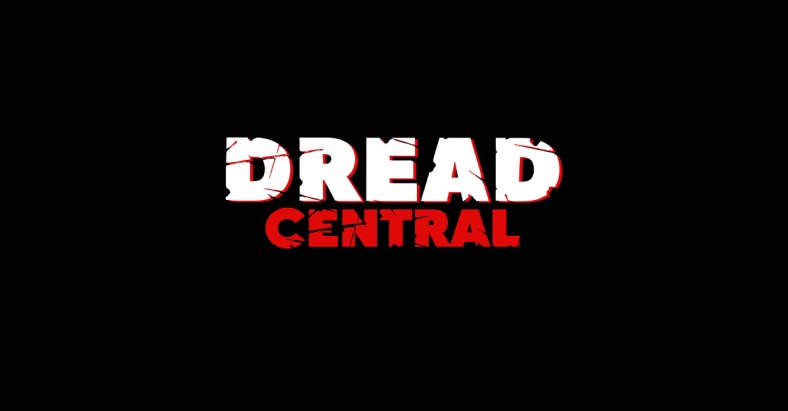My Cannibal Dinner with Greg McLean for Wolf Creek and The Darkness

The Cannibal is a trendy new eatery in L.A. that’s so chic you can’t even get a reservation for months. When I say “you,” I mean: “me.” So, how’d I wind up there last week? (Eating, not doing dishes or anything.) Well, that’s because I work for Dread Central, and the name Dread Central means something in horror circles!
When POP Entertainment decided to host a special dinner for press to honor the creator of their “Wolf Creek” TV series (none other than Australian writer-director Greg McLean), my name got on the list, and there I was elbow-to-elbow with the fancy folks at The Cannibal.
The Cannibal is, as far as I know, just a name, and the meat I ate came from carcasses of the four-legged variety. “At its most primal sense The Cannibal is a butcher’s restaurant. The menu has the sense that your neighborhood butcher, who happens to be obsessed with beer, has decided to make dinner. Rife with every conceivable animal part, the menu will drive a fine line between meat centric and meat crazy. Large primal cuts like whole roasted lamb shoulders, braised pig heads, and whole racks of prime dry aged beef are the way it will utilize all of the whole animals received daily,” says the site, which touts Chef Francis Derby.

In attendance and bellied up to the big wooden table were press, Click-Comm reps, the aforementioned esteemed Greg McLean, and POP Entertainment prez Brad Schwartz. The dinner was largely informal and we talking about everything from Brad’s favorite band (Tragically Hip, and yes, he is Canadian) to Greg’s tumble-weeded Instagram account (I taught him the p’s and q’s – always follow back, but, sadly, my lesson fell on deaf ears, as I followed and was not followed back).
Between meaty bites, we also talked shop. Greg’s got The Darkness behind him and The Belko Experiment ahead of him, but “Wolf Creek” took center stage. The six-episode limited series, which premieres October 14 on POP, should serve to reassure horror fans that malicious Mick Taylor (John Jarratt) has lost none of his psychotic ways in the course of the transition from the big screen to the smaller stream.
“I think Mick may be getting more deranged, actually,” said Greg. “He gets crazier as he goes on. Our priority was to not television-ize what the movies were. We wanted it to be as cinematic and impactful as the movies, and not really pull back on any of the content.” He also said how much American Westerns, like those sweeping classics by John Ford, guided the eye of the show’s cinematography. Same as the Wolf Creek films, the TV show was shot in the Australian Outback. “I really love being in the outdoors because I grew up in the country, so to be there when the sun comes up, and to be there when the sun goes down, you get to see some pretty amazing things. It’s like going camping with 200 people.”
Although “Wolf Creek” is a limited series, Greg said, as Brad listened, he would like to do a second season.
We also delved into The Darkness.
Dread Central: The Darkness is based on a true story, so did you hear it, or was it the screenwriters who came up with the idea?
Greg McLean: Basically the story was told to me firsthand by someone who had an artifact in their home in Sydney, Australia, after coming to Ayers Rock, which is a big landmark in Australia, and they brought back a piece of stone from the tourist attraction. Then all these disasters started happening in their home. I heard this years and years ago, and I always thought it was a magic story; then I researched them, and it was a near common occurrence! I also in that research realized that that same story was happening in the Grand Canyon – that people would take stones back or items from different sites along the Grand Canyon, and weird things happened in their home. And so this is kind of a side concept of how that manifested upon what that was about, and then that led me to examining the Native American mythology and that notion of sacred objects that, if they’re disturbed, bring bad luck to people who screw with that stuff, so that’s how it kinda all started.
DC: Is the Anasazi Indian tribe a real tribe or one that you made up?
GM: Yes, it is; it’s very ancient, one of the first Indian tribes in the U.S., and they’re quite mysterious in many ways. We did quite a bit of research around that tribe, their history, mythology.
DC: What is one of the most interesting facts that you learned about the tribe?

GM: To me, the most amazing thing was the idea that this tribe had a mythology whereby they communed with spirits that would stay in their mythology. That would bring boons to their culture or also be kind of dangerous spirits if they didn’t fulfill the rituals. There were these particular kind figures in terms of their mythology, they were real, there was a real connection between these spirit figures and it was a reality in their mythology. The other amazing thing about this culture is that the entire civilization disappeared in a very short amount of time and to this day people don’t really know what happened. So there’s a huge mystery surrounding this culture and some people have speculated that it has to do with the fact that their relationship with the spirit world became kind of strained, and then there was some kind of cataclysmic event that happened. So, no one really knows what happened to this huge sophisticated culture that kind of pretty much disappeared, in historical terms, overnight, so it’s a combat that I had heard that story that is was kind of amazing as well.
DC: One of the things I really liked about the film was the character of Michael; he’s got such nuance, which is not usual for kids in movies, and also Stephanie is well-rounded too. Can you talk about how you developed the children to be as prominent as the adult characters in the film?
GM: I think having really great actors playing those roles are to thank. We have actors like that who are who so talented and so able to bring life and death to their characters. So the family dynamic looks like a real family because the actors can really have at it and make those moments feel real. It was always written to be a balance with that, with dealing with each of the family member’s problems because ultimately the movie is about a regular normal, when I say normal I mean as screwed up as any, family. All with their own problems. It was important to make sure that each of them felt that they were human and real because they all got their own issues that get kind of drawn out and manipulated by this dark force that comes into their home.
DC: The dark force manifestations are black handprints. How did those come onto play?
GM: The handprints and the mythology of those is from cave paintings – they are the symbol of death, the handprint, and so when I found that out, I felt that’s an extreme and scary kind of notion. When they would start to kind of manifest, that they could put a print there. And it is really a kind of punishment and a warning for people who were taking the stones in the first place because honestly, you have a family who takes things back to their homes in their hands, and it is just a broken kind of law. The handprints are basically a supernatural version, a warning sign saying ‘do not take these things you are screwing things up something if you don’t understand.’
The Darkness is now out on DVD and Blu-ray (with plenty of extras). The “Wolf Creek” limited series airs on the POP network on October 14. And The Belko Experiment, Greg’s collaboration with James Gunn, is due out next year.

Categorized:News

